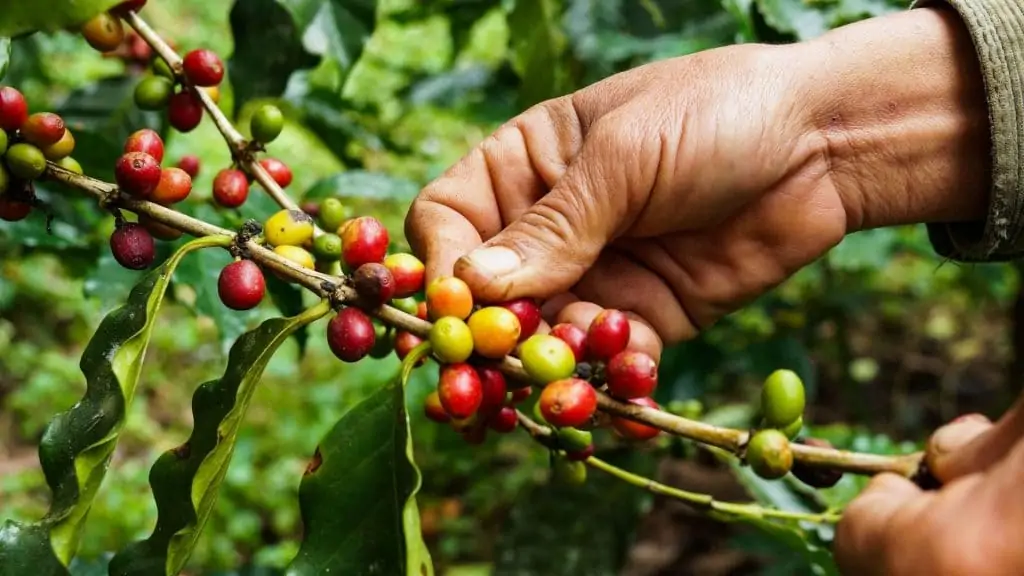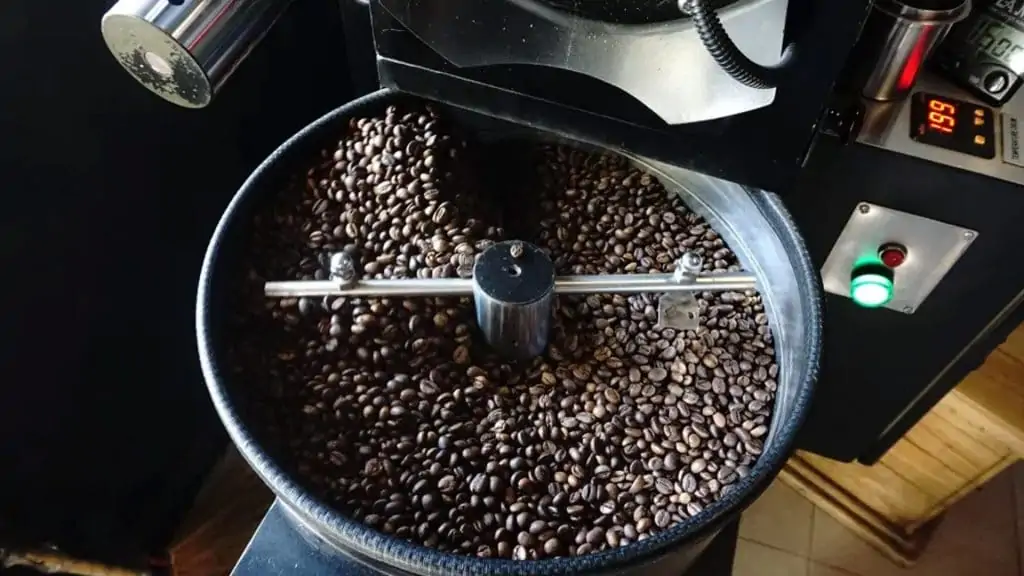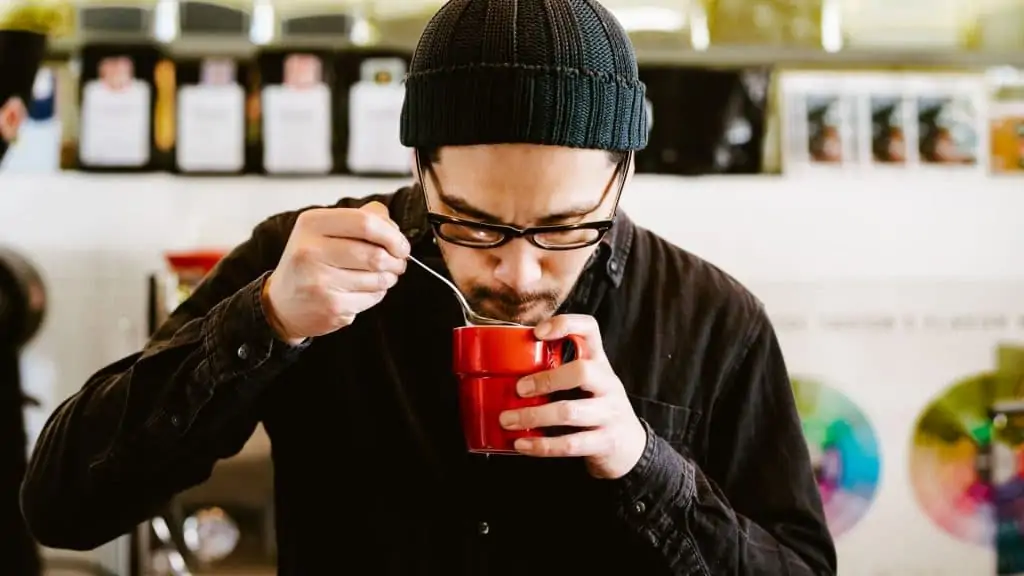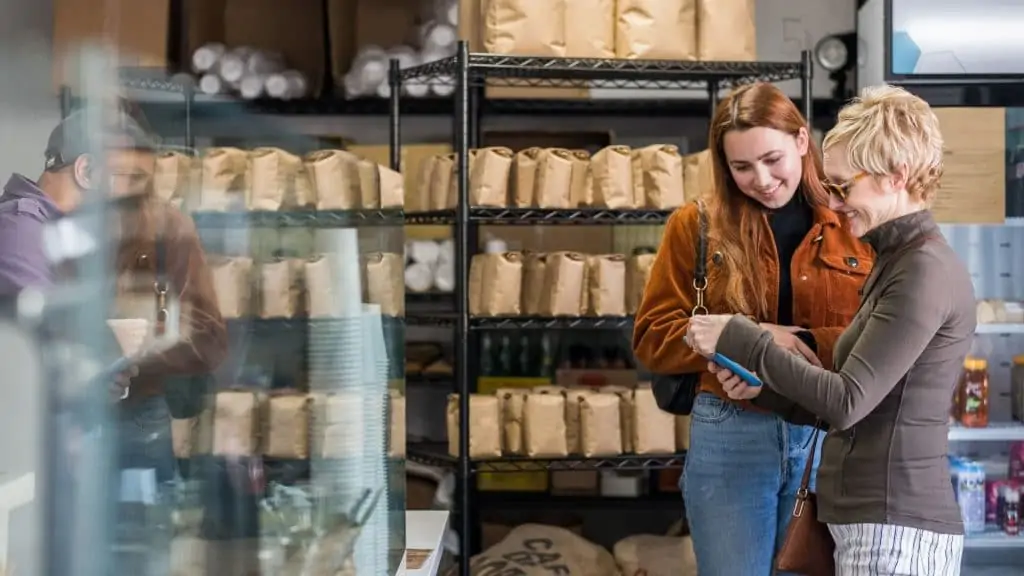For many, coffee is a habit, especially at breakfast to start the day well, in fact, thanks to its properties, it helps us fight tiredness. For other people, however, it is a real ritual, sipped in front of a good book or company.
There are different qualities of coffee and nowadays also different preparation methods. Many people tend to be habitual and always choose the same option, but the bravest ones can indulge themselves! We have prepared this purchase guide to help you discover the different existing variants.
The Most Important Things In a Nutshell

There are different types of coffee on the market, capable of guaranteeing the satisfaction of customers with different needs.
The different qualities of coffee present different flavors, aromas, and nuances that are perceivable even by people who are not experts in the field.
Taste, aroma, and price are important characteristics but they are not the only factors to be taken into consideration. Before buying coffee, we must also make sure that it is a product suitable for the preparation method that we will use. That’s why we’ve created the ultimate coffee buying guide 2021 for you!
Who knows if you have discovered something new with the selection of consumers’ favorite coffees? There are many factors to investigate before making a purchase. In the following paragraphs, we explain everything you need to consider, take note!
What Is Coffee?
Coffee is one of the most consumed drinks worldwide and is prepared from the seeds of an evergreen shrub belonging to the Coffea genus, which grows in tropical climates. These seeds are roasted and ground.
Nowadays coffee is used to prepare hot or cold drinks, but also as an ingredient in numerous recipes, sweet and savory.
Coffee contains caffeine, a natural stimulant that helps fight sleep and tiredness. The action of caffeine on the receptors in the brain causes a feeling of well-being just a few minutes after drinking coffee.
How is Coffee Classified By Variety?
Although the genus Coffea has more than 100 known species, the two most common species correspond to the commercial varieties arabica and robusta.
The cultivation of Arabica coffee is widespread in Central and South America, East Africa and Asia. The robust species, on the other hand, is found mainly in Africa, Brazil and some areas of Asia.
Here are some interesting features:
Arabica Coffee (Coffea Arabica)
This plant, of which there are several varieties, seems to be native to Ethiopia and grows at altitudes between 900 and 2000 meters. It is characterized by its low concentration of caffeine and an intense flavor and aroma.
Robusta Coffee (Coffea Canephora)
Robusta coffee has its origins in Zaire, but today it is grown in different areas with an altitude between 200 and 600 meters and with a warm climate. Robusta has higher caffeine content, it can be more than double the arabica coffee. It has a bitter taste.
What types of coffee exist, depending on the degree of roasting?
The production of coffee begins with the collection of the fruit of the coffee plant (also called a cherry), from which the seeds are extracted which are then subjected to drying and roasting.
The latter is one of the fundamental stages of processing, in addition to making green coffee edible, it also determines the aromatic profile of the blend.
There are several types of toasting: light, medium, and dark.
The dark roasting produces a strong and intense coffee, with a slightly pronounced acidity and a lower quantity of caffeine. This type of coffee is used for example to prepare a full-bodied and bitter espresso.
For coffees prepared with filter extraction methods, on the other hand, light roasting is preferred, which provides softer and more acidic products, with floral and fruit notes.
A medium roasting instead gives a rounder and more balanced, full-bodied coffee with a wider aromatic spectrum.
The Collection of The Coffee Beans

The collection of coffee beans should take place in the rotation, as they reach perfect maturity.
This harvesting method, called in technical jargon “picking”, provides that the qualified pickers, passing on foot over and over again between the coffee plants, pick one by one only the fruits that have reached perfect ripeness.
This technique guarantees an extraordinary selection of fruits, the first requirement for obtaining the maximum taste and aromas in the cup.
Given the extremely high costs, it is adopted only for coffee of absolute value and with excellent organoleptic characteristics.
The other method of harvesting coffee beans is called stripping: the picker, grasping the branch of the plant with one hand, scrolls the other along the entire length, removing everything it encounters: flowers, immature fruits, ripe fruits but also rotten, corrupt, imperfect or overripe fruits.
This technique is applied to areas of intensive cultivation, and to varieties of coffee that are not particularly interesting or valuable, intended to compose commercial blends.
In larger crops, such as in large Brazilian large estates, specific machines are used that automatically provide for harvesting and obtain the same stripping results.
Drying of The Coffee Beans
The drying process follows the collection process and can take place with the dry method or with the wet method.
The dry processing method requires that the drupes are placed in huge sunny farmyards, and stirred continuously to avoid the formation of mold until they are completely dried.
At this point, the dry shell is crushed and the two coffee beans inside are released. The dry method is applied to coffees harvested with stripping method, and therefore to coffees of less value and selection.
In general, manual harvesting (picking method) is followed by processing with the wet method, which requires that the beans are placed in huge tanks of water and sorted based on their floating.
The outer shell is then removed and the beans are fermented in a controlled way, from 12 to 48 hours, amplifying their aromaticity and sweetness. They are then washed and dried in the sun and finally selected further according to their size and based on the absence of defects.
To assess the size of the coffee bean, the sieve is used, a plate with holes of various diameters, through which the beans are passed, dividing them into batches with homogeneous dimensions.
The size of the beans is international standard parameters used to formulate the coffee quality classification. Generally but not excessively large coffees are generally the ones with the highest value because they have the best organoleptic characteristics.
Roasting The Coffee Beans

Roasting is the final process reserved for coffee beans capable of transforming the raw, basically tasteless, bean into the roasted bean.
Roasting is a delicate and complex process, which never takes place in the country of origin since, once the roasting is carried out, after a first positive phase of maturation of the roasted bean, a rapid process of loss of aromas begins and the coffee becomes particularly sensitive moisture and absorption of foreign odors.
The roasting process consists of introducing the coffee beans in a machine (roaster) that brings the beans to a temperature between 200 and 250 ° Celsius, for a time between 10 and 20 minutes, depending on the type of coffee you want to transform and the result you want to achieve.
Through the progressive transmission of heat to the beans, over 600 different chemicals are generated, above all thanks to the Maillard reactions between carbohydrates and proteins.
During roasting, the coffee bean undergoes a weight loss of 15-20%, due to the evaporation of water and some volatile substances, the increase in volume, the formation of a dark color due to the carbonization of the cellulose and the caramelization of sugars, the appearance on the surface of the so-called caffeine beans, a dark oil that determines the characteristic aroma, and a slight loss of caffeine due to heat.
Roasted coffee is delicate and should be stored carefully, away from oxygen and light and possibly at low temperatures. For our guide on how to roast coffee beans at home have a look here.
What Is The Honey-Washed Process?
Lately, we hear more and more often about the “Honey” method. But what exactly is it? And how does it affect the result in the cup?
As we know, the main processing methods can be:
- Natural – the drupes are left to dry on African threshing floors or beds and turned continuously to allow the grain to dry evenly.
- Washed – the drupes are first stripped, and then immersed in tanks of water and left to ferment in a controlled manner to the desired degree.
The “Honey” method, more and more often named, is a middle ground between the previous two and is mainly used in the Specialty Coffee sector.
Originally from Costa Rica, it was studied with the specific aim of improving the quality of coffee and has spread rapidly in neighboring countries.
The name derives from the consistency of the mucilage, which tends to absorb the humidity of the air throughout the drying phase.
In this case, the ripe drupes are stripped as in the washed method but leaving a layer of mucilage on the surface of the grain. The latter is very rich in sugars and acids, which will then be absorbed by the bean, inevitably causing influences in the final flavor.
The drying phase is fundamental for this process because it determines its success and the consequent result in the cup. It must not be too fast to allow the aromas to pass from the mucilage to the grain, but not too slow to avoid fermentation, which could produce hints of mold in the cup.
The coffee is placed on African beds, or in threshing floors exposed to the sun, and turned several times throughout the day until the desired percentage of humidity is reached.
The drying process with this method is much longer than the first two precisely because of the presence of mucilage, which during the night tends to absorb part of the moisture again, which must then be eliminated during the following day.
In the cup, the coffee worked with this method is sweet, with good acidity and a particular aroma, thanks to the sugars present in the mucilage which, increasingly concentrated during drying, are said to be absorbed by the bean, and then found in the cup.
The “Honey” processing can have, associated with the name, different “colors”, which depend on the percentage of mucilage left on the grain during drying.
The classified colors are:
- White Honey: 10% mucilage layer
- Golden Honey: 25%
- Yellow Honey: 50%
- Red Honey: 75%
- Black Honey: almost 100%
Of course, the higher the percentage of mucilage, the longer the drying time, but also the intensity and variety of aromas will be more intense and complex.
Different Regions, Different Flavors: How Origin Affects Coffee Flavor
The origin is, without a doubt, a factor that influences the flavor and aroma of coffee. Depending on the continent and country – and even the region – coffee will have different characteristics.
To help you understand which coffee to buy, we have prepared this table with the particularities of coffee from different countries.
| Country | Region | Characteristics |
| Brazil | South America | Delicate and sweet flavor, light aroma |
| Mexico | South America | Delicate, slightly acid taste |
| Colombia | South America | Slightly bitter taste, full-bodied coffee, with an intense aroma and medium acidity |
| Costa Rica | South America | Sweet and delicate flavor with fruity notes, full-bodied |
| Tanzania | Africa | High acidity and very intense aroma |
| Ethiopia | Africa | Acidic, with an intense flavor and floral and fruity notes of jasmine and citrus |
| Kenya | Africa | Full, fruity flavor with medium-high acidity |
| Java (Indonesia) | Asia | Very bitter |
| Sulawesi (Indonesia) | Asia | Intense flavor and acidity |
What Types of Coffee Can You Buy In Stores or Online?
Coffee can be purchased in four different types, with different versatility.
In this table we help you understand the differences between the different presentations, in order to choose the most suitable one at the time of purchase.
Characteristics | Characteristics |
| Whole Coffee Beans | Natural coffee. If you buy coffee beans, you will need to grind it before using it. Normally it is characterized by a more intense flavor and aroma. |
Characteristics | Characteristics |
| Ground Coffee | The coffee beans are ground and hermetically packed to preserve the aroma. It is used with coffee makers or coffee machines. |
Characteristics | Characteristics |
| Instant Coffee | It can be prepared with water or milk and it is not necessary to use coffee makers or coffee machines. It is obtained by dehydrating the coffee by evaporation. |
Characteristics | Characteristics |
| Decaffeinated (Decaf) Coffee | Decaffeinated coffee has the same flavor and aroma as a normal coffee, it simply has no caffeine which is extracted before roasting. |
Should I Buy Whole Coffee Beans or Ground Coffee?
It is better to prefer the purchase of whole coffee beans because it maintains the body and will have a fresher flavor and a more intense aroma.
In this case, the idea is to grind the coffee just before using it. If instead, you decide to grind the whole package, try to consume it within a month to avoid losing its properties.
Ground coffee is undoubtedly more convenient because it can be used immediately.
What Characteristics Should Be Considered When Tasting Coffee?
There are specific characteristics that must be considered when tasting a coffee, they are the same as those assessed by experts in the cupping sessions (sensory analysis).

We briefly explain what these are:
Body
It is used to indicate the structure of the drink and describes the physical properties of coffee, which manifest themselves in tactile sensations perceived by the mouth. We can distinguish coffees with a full, medium or round body.
Acidity
This characteristic mainly depends on the cultivation of coffee (more pronounced in Arabica) and altitude. Higher altitudes will correspond to more intense acidity.
The acidity levels are classified in 3 stages:
- Level 1 – natural pleasant
- Level 2 – natural unpleasant
- Level 3 – undesirable.
Aroma
The aroma of Arabica coffee is sweet and delicate, while robust it is characterized by stronger and bitter aromas.
Flavor
The taste is very personal, however, there are coffees with more delicate flavors and others more intense, some have floral or fruity notes, others recall caramel or chocolate.
The Types of Coffee Makers on The Market
There are multiple ways to brew coffee, both professionally and at home.
We have prepared this handy table below illustrating the most popular coffee makers, including the ideal coffee grind size and brewing times.
You can view more information on each coffee maker by clicking the name of it.
Brewing Using Pressure
| Coffee Maker | Grind Size | Brewing Time |
| Espresso Maker | Very Fine | 1-2 minutes |
| Automatic Coffee Machine | Medium | 3-5 minutes |
| Moka Pot | Medium-Fine | 5-7 minutes |
| Aeropress | Very Fine | 3-5 minutes |
Brewing via Steeping
| Coffee Maker | Grind Size | Brewing Time |
| French Press | Coarse | 4-5 minutes |
| Soft Brew | Medium-Coarse | 4-7 minutes |
| Siphon | Medium-Fine | 6-8 minutes |
| Coffee Bag | Very Fine | 1-2 minutes |
Brewing via Filtration or Dripping
| Coffee Maker | Grind Size | Brewing Time |
| Auto Drip | Medium-Fine | 4-6 minutes |
| Chemex | Medium-Coarse | 4-7 minutes |
| Vietnamese Drip | Medium-Coarse | 4-5 minutes |
| Percolator | Coarse | 4-10 minutes |
| Cold Brew | Coarse | 12-24 hours |
Brewing via Filtration or Dripping
| Coffee Maker | Grind Size | Brewing Time |
| Ibrik | Very Fine | 1-3 minutes |
| Cowboy Method | Medium-Coarse | 4-6 minutes |
What are The Advantages and Disadvantages of Coffee?
As we have already seen, there are many factors to consider when choosing which coffee to buy. Depending on the variety, the sensory characteristics are very different.
We are not done yet! We want to show you the main advantages and disadvantages of good coffee.
Advantages
- It is satiating
- Helps fight tiredness
- According to some studies, it is beneficial for health
- Stimulates thermogenesis
- Helps regulate blood sugar
Disadvantages
- It makes some people nervous
- It can make your rest worse
- If taken in abundance it can become pro-inflammatory
Purchase Criteria

We are almost at the end of this buying guide.
You have probably already figured out which coffee you could choose, but we recommend that you also consider the following aspects, before making the final purchase.
Only then will you be 100% sure you won’t regret your purchase.
- Caffeine Content
- Production Method
- Altitude
- Packaging
- Date of Packaging
Caffeine Content
Each type of coffee contains a different concentration of caffeine. In addition to choosing a product that meets your tastes in terms of coffee, do not forget to consider the effect that caffeine has on you.
If you find that it negatively affects the quality of your rest, try buying a coffee with less caffeine. You should still consume decaffeinated coffee from late afternoon.
Production Method
There are several coffee processing methods, but the main ones are the natural method and the washed one.
This information should be specified on the packaging. Washed coffee has a defined flavor with more intense acidity, while natural coffee is more delicate, with floral notes.
Altitude
Altitude affects the flavor and caffeine content of coffee. A coffee harvested at more than 1500 meters is more acidic and slightly sweet, while lower altitudes correspond to lower acidity and more natural flavors.
Packaging
The label on the package should specify all the information required by law, such as the packaging date, the expiry date, the name, the manufacturer and the batch.
In some cases, you will find additional information such as the variety of coffee, the production method, the degree of grinding and tips for optimal conservation.
Packaging date
Among the information that should be contained on the label, we find the packaging date. Try to choose a freshly packaged item, because the organoleptic properties of coffee are not preserved intact over time.
Precisely for this reason, it is not even convenient to buy and store various packs of coffee, it is better to buy one pack at a time.
Final Thoughts
For many, coffee is a product of the utmost necessity. If this is also true for you, we recommend that you consider the information in this purchase guide to choosing the type of coffee that suits your tastes and needs. Even if there are very cheap options, try to always choose a quality product.
Always read the label so you have all the information you need to make a smart choice. Try to buy fresh coffee and consider the amount of caffeine in it. However, don’t forget to choose according to your tastes, to be able to enjoy each cup.
